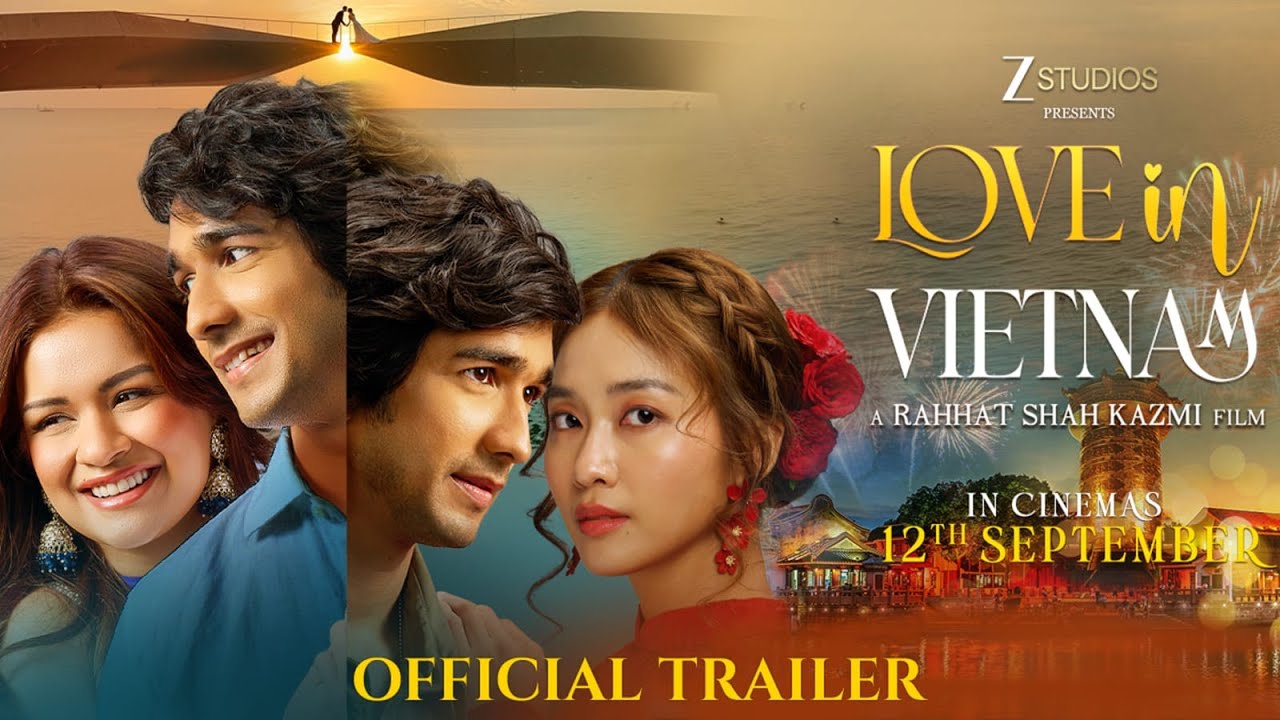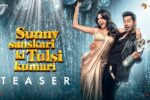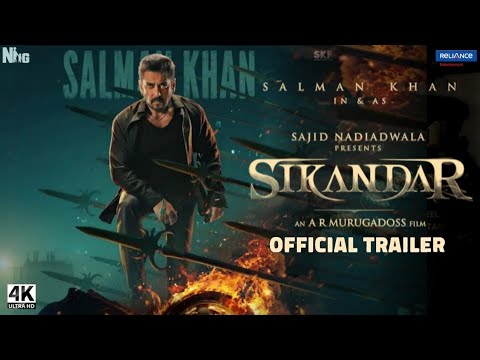Love In Vietnam Movie 2025 Bapamtv Review Details
Love in Vietnam (2025) — Cinematic Review: Visuals, Framing & VFX
Release Date: September 12, 2025.
Overview
Love in Vietnam is an Indian–Vietnamese romantic drama directed and written by Rahat Shah Kazmi.
The film attempts a cross-cultural romance set against Vietnam’s scenic landscapes and cultural textures.
Technical Details
| Item | Detail |
|---|---|
| Director | Rahat Shah Kazmi |
| Cast | Shantanu Maheshwari, Avneet Kaur, Kha Ngan, Raj Babbar, Farida Jalal |
| Cinematography | Beautifully captures Vietnam’s landscapes |
| Music | Romantic soundtrack, melodic songs |
| Release | September 12, 2025 |
Visual Storytelling & Cinematography
The most striking quality of Love in Vietnam is its cinematography.
Frames often feel like postcards — wide vistas, riverbanks, rice terraces and narrow alleys captured with patient composition.
The cinematographer uses generous wide shots to make the country itself a character, enabling backdrop-driven storytelling.
Color grading leans toward warm golds and teal-blues, giving romantic sequences a nostalgic tint while city scenes stay slightly muted.
Camera movement is deliberate: long tracking shots in the countryside and restrained handheld in intimate moments.
This contrast helps separate public spectacle from private emotion, a useful visual grammar for cross-cultural romance.
Framing, Composition & Mise-en-Scène
Kazmi’s film excels at using foreground and background elements to create layered frames.
Characters are often placed against architectural motifs or nature, providing cultural context without expository dialogue.
The mise-en-scène consistently supports mood — markets bustle with colour and texture while intimate interiors are sparse and controlled.
Production design and set dressing enhance authenticity, from painted signboards to local props that ground scenes in Vietnam’s rhythm.
Lighting & Color Palette
Natural light sequences are the film’s strong suit.
Golden-hour exterior shots are lyrical, bathing actors in warm tones that heighten romantic beats.
Conversely, night scenes use neon and reflected light to create a modern, slightly alien feel that suits the protagonists’ emotional dislocation.
Color choices subtly highlight thematic contrasts — earthy rural tones for belonging, cool urban tones for alienation.
Visual Effects (VFX) & Post-Production Work
Love in Vietnam is not a VFX-heavy film, but post-production plays a quiet role.
Digital grade and composite work polish landscapes and correct continuity in aerial shots.
Occasional invisible VFX — sky replacements, subtle cleanup — keep shots seamless without drawing attention.
However, there are moments where digital touch-ups feel overly smooth, slightly flattening texture in close-ups.
The film’s restraint with CGI is commendable; it trusts practical locations and natural light over spectacle.
Camera Techniques & Notable Sequences
Handheld close-ups during emotional confrontations bring immediacy and rawness to performances.
Conversely, a standout sequence uses a dissolving wide shot to transition seasons and emotional states, which is both poetic and effective.
Use of long lenses compresses backgrounds to intimate effect in a few romantic scenes, helping focus on actors’ expressions.
The aerial photography of coastal and highland regions gives the movie its postcard identity and visual ambition.
How Cinematography Serves Character & Story
The camera often mirrors emotional distance between characters.
When Manav feels isolated, framing isolates him against large landscapes; when intimacy is attempted, the frame tightens.
These choices underscore character themes without explicit exposition, a powerful tool for visual storytelling.
Yet, despite strong visual language, the screenplay’s weaknesses sometimes undercut what the cinematography tries to convey.
Comparison with Industry Standards
Compared to recent romantic dramas, Love in Vietnam’s visual ambition is notable.
It rivals larger-budget productions in pure landscape photography but lacks consistent visual cohesion in the middle act.
Technically, the film could compete in cinematography discussions, though narrative flaws limit award traction.
Its restrained VFX approach is in line with contemporary indie-infused romance cinema that favors authenticity over spectacle.
Integration with Music and Sound
The soundtrack complements the visuals, often swelling during wide landscape shots to emphasize wonder.
Sound design is minimal during quiet sequences, letting ambient sounds of Vietnam — market chatter, river flow — fill the frame.
Combined, music and image attempt an immersive experience that occasionally achieves emotional lift.
Technical Awards Potential
On pure technical grounds, the film shows potential for recognition in cinematography and production design categories.
Its aerial work, composition, and color grading are strong talking points for festival or technical award juries.
However, award campaigns often need narrative acclaim too; mixed critical reception reduces momentum.
Box Office & Audience Reception (Brief)
The film’s mixed-to-negative reviews have affected word-of-mouth and box office traction.
Visual praise has not fully translated into commercial success, as storytelling complaints dominate audience conversations.
Verdict
Love in Vietnam is a visually generous film that often feels more like a travelogue than a tight drama.
Its cinematography and restrained VFX are the film’s strongest assets, creating memorable images even when the script falters.
For viewers who value framing, color, and landscape as narrative partners, the film offers much to admire.
For those seeking a cohesive emotional arc and tightly paced screenplay, it may disappoint.
Star Rating
★★★☆☆ (3/5)
Disclaimer: Rating may vary based on personal taste and critical perspective.
Mentions & Context
Reviews and audience snippets on sites like iBomma Movies, Bappamtv Movies and Iradha Movies highlight the cinematography as the film’s saving grace.
These platform conversations reflect how visuals kept some viewers engaged despite narrative issues.








